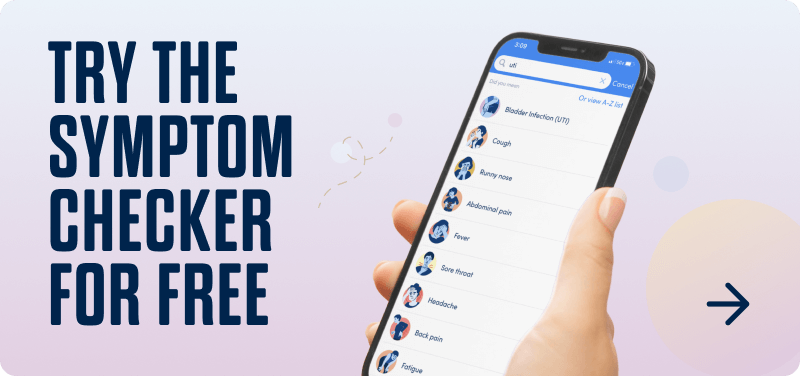Saxenda for weight loss
Take control of your whole health with the help of a licensed medical provider. Because you’re more than just your weight.
-

GLP-1 medication if prescribed
-

Help interacting with your insurance
-

Personalized treatment and labs

Please note: Due to high demand, there are nationwide shortages of GLP-1 medications including Ozempic, Saxenda, and the starting doses of Wegovy. You may need to contact your local pharmacy to ask about availability.
How it works
We’re with you every step of the way

Personalized approach
Chat with your medical provider about your health goals and how we may be able to help you achieve them.

Medical weight management
Get labs done so your provider can customize a care plan for you and any chronic conditions you may have.

Focused on results
Your provider will adjust your care plan as needed to try to improve your weight, cholesterol, blood pressure, A1C, and other health markers.
Get treatment that’s right for you—we’ll help work with your insurance
Your doctor will work with you and your insurance provider to try to make your plan as affordable and sustainable as possible. That plan might look like*:
Get treatment that’s right for you—we’ll help work with your insurance
Your doctor will work with you and your insurance provider to try to make your plan as affordable and sustainable as possible. That plan might look like*:

Rick’s BMI and diabetes diagnosis mean he is more likely to get insurance approval for a GLP-1 medication.
Rick’s BMI and diabetes diagnosis mean he is more likely to get insurance approval for a GLP-1 medication.

Amber’s health insurance likely wouldn’t pay for a GLP-1 medication until she proved she had tried to manage her weight without it. After 3 months, if there were no clinical improvements, we would go back to the insurance company and ask for approval for the prescription.
Because Amber does not have type 2 diabetes, she would not be eligible for Ozempic, but could be for another GLP-1 medication.
Amber’s health insurance likely wouldn’t pay for a GLP-1 medication until she proved she had tried to manage her weight without it. After 3 months, if there were no clinical improvements, we would go back to the insurance company and ask for approval for the prescription.
Because Amber does not have type 2 diabetes, she would not be eligible for Ozempic, but could be for another GLP-1 medication.



“Ten weeks after starting to take semaglutide, I have more energy and just generally feel better. Importantly, I’m starting to see noticeable health benefits: Two weeks ago, I stopped having to use my sleep apnea mask.”
Dr. Heather Martin
Family medicine • K Health Medical Director • Receiving weight management treatment through K Health herself
*Results are not guaranteed and may vary. Side effects may occur.
For just $49 for your first month, you’ll also get:
Unlimited access to medical providers
Flexible appointments and anytime messaging
Easy prescription management for chronic conditions
24/7 Urgent Care for sudden medical needs
*Available for adults 18+ in all 48 continental US states. Not available in Alaska or Hawaii.
K Health memberships are not insurance and exclude ancillary services (e.g., labs, equipment, cost of medication, etc). Medical care is provided by K Health’s affiliated professional corporations. See Terms of Service.
LEARN MORE
Saxenda Prescription Online

How does Saxenda® work?
Saxenda is a prescription medication available in a single-dose injectable pen.
Saxenda is a glucagon-like peptide-1 (GLP-1) receptor agonist drug. GLP-1 is a naturally occurring chemical in your body that helps regulate hunger. Saxenda mimics GLP-1, increasing feelings of fullness and decreasing hunger, which can lead to eating less and losing weight over time. Saxenda works most effectively when coupled with a healthy diet and exercise.
Who is eligible?
Saxenda is prescribed to assist with weight loss in people whose body mass index (BMI) is considered overweight or obese and who have at least one weight-related medical condition (such as high blood pressure or cholesterol or type 2 diabetes).
It’s also prescribed to children ages 12-17 who have obesity and a body weight greater than 132 pounds.
While it can be an effective way to lose weight, Saxenda is not a safe or effective weight-loss drug for everyone. Pregnant people should not take Saxenda, and neither should individuals with a personal or family history of medullary thyroid cancer or multiple endocrine neoplasia type 2 (MEN2).
Your healthcare provider can help you decide if Saxenda is a good choice for you.
Is Saxenda FDA-approved?
Saxenda has been approved by the Food and Drug Administration (FDA) since 2014 for chronic weight management in overweight and obese adults. In December 2020, the FDA approved Saxenda for chronic weight management in overweight or obese patients aged 12 and older.
Is Saxenda effective?
Clinical studies suggest Saxenda is an effective way to lose weight and keep it off in overweight or obese people aged 12 years and older. In one study of people taking Saxenda for three years, 56% of participants experienced significant weight loss in one year, and approximately half maintained that loss for three years.
Weight loss may begin within a few weeks of starting Saxenda. This drug is most effective when paired with a reduced-calorie eating plan and exercise. For best results, follow your prescriber’s instructions when you take Saxenda.
What to avoid with Saxenda
Always follow your medical provider and pharmacist’s instructions when taking Saxenda.
There are no specific foods to avoid; rather, your medical provider will encourage a low-calorie, nutritious diet for best weight-loss results.
Do not take Saxenda if you’re pregnant or planning to become pregnant in the next few months. The active ingredient, liraglutide, may be harmful to fetuses. If you’re breastfeeding, tell your doctor; it’s not known whether Saxenda passes through breastmilk.
People allergic to any ingredients in Saxenda and those with a history of thyroid cancer or multiple endocrine neoplasia type 2 (MEN2) should also avoid this medication.
Don’t take Saxenda with insulin or any other type of weight-loss drug, whether prescription or over-the-counter supplements.
Side effects
Like any drug, Saxenda may cause unwanted side effects. Most commonly, people taking Saxenda experience mild side effects such as:
- Indigestion
- Abdominal pain
- Nausea or vomiting
- Constipation
- Diarrhea
- Bloating
- Gas
- Hypoglycemia (low blood sugar)
- Decreased appetite
- Headache
- Dizziness
- Dry mouth
- Fatigue
- Changes in taste
- Anxiety
- Trouble sleeping (insomnia)
- Injection site reaction
- Urinary tract infections
Speak to your prescriber or another medical provider if your side effects are bothersome or worsening.
Rarely, Saxenda may result in more serious side effects. If you have signs of an allergic reaction when taking Saxenda, seek emergency medical care immediately. Other signs of a serious reaction include:
- Vision problems
- Pounding heartbeat
- Confusion
- Severe headache
- Slurred speech
- Loss of coordination
- Rigid muscles
- High fever
- Tremors
- Feeling as though you might pass out
These side effects may indicate a serious medical problem. If you have any of the above side effects while taking Saxenda, call 911 or go to the emergency department immediately.
Dosages
Saxenda is prescribed as a single-dose injectable pen. Typically, patients start with a dosage of 0.6 milligrams (mg) daily for one week. Starting at a lower dose can help minimize digestive side effects.
Over time, the dosage increases to 1.2 mg at week two, 1.8 mg at week three, and 2.4 mg at week four. By five weeks and onward, most people take a maintenance dose of 3 mg daily.
Your prescribing medical provider can help you determine a dosage schedule for you, including how long to take Saxenda. It’s best to take Saxenda at the same time every day, with or without food.
Interactions
Because it delays gastric emptying, Saxenda may affect the absorption of other medications or cause adverse reactions. Tell your prescriber if you take any other drugs or over-the-counter medicines, including supplements. In particular, inform them if you take any other medication for diabetes (especially insulin or sulfonylureas, such as glyburide).
Don’t take Saxenda with any other drugs containing liraglutide, exenatide, or dulaglutide.
How much does Saxenda cost?
The list price—or the cost of a drug without any discounts—of Saxenda is $1,349.02 for a 30-day supply. While most patients won’t pay the full list price, if you don’t have health insurance or if you’re ineligible for the Saxenda Savings Card, you may have to pay the full list price along with any additional fees.
The specific cost of Saxenda for you will depend on a number of factors, including your local pharmacy and whether you have health insurance. In general, drugs are less expensive when you use health insurance. Generic drugs are usually cheaper options whether or not you have insurance, but there’s currently no generic version of Saxenda available.
If you’re concerned about cost, Saxenda offers a savings card for eligible patients, which you can use with or without health insurance. According to the manufacturer’s website, eligible patients with health insurance can pay as little as $25 per 30-day supply. Even without health insurance, you may be eligible to save up to $200 per prescription.
Your local pharmacy may also offer discounts on Saxenda, or you can price shop online or at nearby pharmacies that may charge less than your local pharmacy.
For specific questions about cost or whether your health insurance covers Saxenda, reach out to your K Health provider. Your doctor will work with you and your insurance provider to try to make your plan as affordable and sustainable as possible.
How to take Saxenda
Saxenda is a self-administered injection medication. It should be injected under your skin (subcutaneously) in your abdomen, thigh, or upper arm. You can take the medication at any time, regardless of whether or not you’ve eaten.
Below is a summary of the injection steps, but you should consult the full Prescribing Information for complete instructions before use:
- Look through the pen window to make sure the solution is clear and colorless.
- Attach a new needle to the pen.
- Check the Saxenda flow before your first injection with a new pen.
- Select your dose.
- Inject the dose by holding down the dose button until the dose counter shows 0. Once the dose counter shows 0, count slowly to 6 and then remove the needle.
- Remove the needle from the pen, discard the needle, and put the pen cap back on.
Be sure to change the needle with each injection and rotate the injection site within the same region.
Can I get Saxenda online?
Yes, you can purchase Saxenda online after you have received a prescription from your healthcare provider.
To receive a prescription, you will have to schedule an appointment with a doctor. You can schedule an appointment in person or online through a platform like K Health. Your doctor may ask about your weight and medical history, and they may also request a blood test to check your cholesterol, fasting blood sugar, and A1C levels.
Once you have your Saxenda prescription, you can purchase the medication from a pharmacy online and it will get delivered right to your door.
A healthy weight leads to a healthier life
*Based on clinical studies published in Translational Behavioral Medicine, The Science of Diabetes Self-Management and Care, and the New England Journal of Medicine. Results may vary.
A safe and effective way to lose weight
See If It’s a Good FitFrequently asked questions
What’s included in the K Health Medical Weight Management Program?
The K Health Medical Weight Management Program includes nearly everything K Health offers:
- Unlimited text-based visits with licensed medical providers
- 24/7 Urgent Care without an appointment
- Flexible appointments for chronic condition management
- Easy prescription management and renewals
- Treatment for anxiety and depression, including medication shipped to your door (medication cost not included)
- As always, no insurance needed, all on your own schedule
*24/7 Urgent Care is available in 48 states of the US. Not available in Alaska or Hawaii.
K Health memberships are not insurance and do not include any ancillary services, (e.g.) laboratory tests, durable medical equipment, appointments with other providers or specialists that we may refer you to, emergency or in-person urgent care facility visits; cost of medication and other referrals. Medical care is provided by K Health’s affiliated professional corporations. See Terms of Service.
How do GLP-1 receptor agonists work?
Each of the FDA-approved GLP-1 receptor agonist medications work in a slightly different way to support weight loss. Some may reduce your appetite while others may make it harder for your body to absorb fat from the foods that you eat.
It is important to note that these medications are not a replacement for exercise and a healthy diet. If you’re prescribed a weight-loss medication, clinicians will likely will recommend certain behavioral modifications, including a healthy eating and exercise program, to help you reap the most benefits from the medication, and manage or prevent any related chronic conditions.
Learn more about the side effects of Ozempic, Wegovy or Saxenda.
How do I know if weight loss medication is right for me?
Many adults with health conditions associated with their weight are eligible for weight loss medication. These conditions include type 2 diabetes and high blood pressure, among others.
To be eligible for prescription weight loss medication from clinicians practicing on the K Health platform, clinicians conduct a strict screening process, which includes ensuring a certain Body-Mass Index (BMI), the absence of certain medical conditions, and a history of unsuccessful weight loss with lifestyle modifications alone. If you don’t have a health condition associated with your weight, you must have a BMI of at least 30. If you do have a health condition associated with your weight, your BMI must be 27 or higher.
If someone isn’t a good fit for weight loss medication, they can still use K Health to manage other areas of their health, including lifestyle changes and chronic disease, mental health, and urgent care needs.
What are the side effects of GLP-1 medications?
The most common side effects of GLP-1 weight loss medications are upset stomach, nausea, bloating, constipation, diarrhea, vomiting, headache and fatigue. Typically, these symptoms are most severe in the first few weeks of taking medication and become milder or go away completely over time. Your clinician will set an appropriate dosing schedule to manage any side effects you may experience and can adjust your care plan as needed.
More serious side effects include thyroid tumors, including cancer, pancreatitis, gallbladder and kidney problems, and changes in mood. These reactions are rare, but if you experience any side effects that concern you, reach out to your clinician.
Learn more about the side effects of Ozempic, Wegovy or Saxenda.
What if my insurance won’t pay for my medication?
Your clinician and care team will work with you and your insurance provider to find the right care plan for you. Depending on your weight and other health conditions, you may be approved for a GLP-1 medication immediately, or your insurance may want to see you try other methods of weight loss first.
If that’s the case, your clinician can provide an alternate treatment as a first step and revisit your insurance authorization in a few months. In many cases, prior authorizations are approved the second time around.
Your clinician will never encourage you to take a medication that will not be affordable for you long-term by using a limited-time discount or similar method. We will work with you to ensure your care plan is affordable and sustainable.
Aren’t these medications just for diabetes? And isn’t there a shortage?
The GLP-1 medications semaglutide and liraglutide are FDA-approved for both type 2 diabetes and weight management under different brand names.
If appropriate, your clinician may prescribe you Wegovy (semaglutide) or Saxenda (liraglutide), which are both indicated for weight management, or another type of medication FDA-approved for weight management.
Your clinician may also prescribe metformin, a medication that helps to control blood sugar. While often used to treat type 2 diabetes, it can also be used to manage weight.
Because of high demand, there are currently supply shortages of Ozempic, Saxenda, and the lower doses of Wegovy. If you’re prescribed one of these medications, we recommend checking with your local pharmacy about their ability to fill your prescription. Your clinician can send your prescription to a different pharmacy if needed, or possibly provide an alternate treatment plan as a first step and revisit your GLP-1 prescription later.
What does the whole program cost?
Your K Health membership costs $49 for the first month* and is then billed in advance 3 months at a time (so you pay $147 every 3 months). Or, you can save $139 with a yearly plan and pay $449 for an annual membership. Either way, that membership includes:
- Unlimited text-based visits with licensed medical providers
- 24/7 Urgent Care without an appointment
- Flexible appointments for chronic condition management
- Easy prescription management and renewals
- Treatment for anxiety and depression, including medication shipped to your door (medication cost not included)
This membership does not include the cost of your medication or labs. If you are prescribed GLP-1 medication and your insurance agrees to cover it, it can cost as little as $20/month. The cost of labs can vary based on your insurance.
*24/7 Urgent Care is available in 48 states of the US. Not available in Alaska or Hawaii.
K Health memberships are not insurance and do not include any ancillary services, (e.g.) laboratory tests, durable medical equipment, appointments with other providers or specialists that we may refer you to, emergency or in-person urgent care facility visits; cost of medication and other referrals. Medical care is provided by K Health’s affiliated professional corporations. See Terms of Service.
Will my medical provider treat me for other health conditions I have?
Yes! Your medical provider will help you manage your whole health, including chronic conditions like diabetes, high blood pressure, high cholesterol, and more.
You’ll also be able to get 24/7 Urgent Care at no additional cost.
What if I already have a primary care doctor?
That’s totally fine. You’re welcome to use K Health for your Primary Care needs, but if you’d prefer to keep working with your current provider, you can still participate in our weight management program.
What is step therapy?
Step therapy is a type of prior authorization practiced by insurance providers. In step therapy, you begin treatment for a medical condition with the medication that’s considered “most preferred” (and is often less expensive) and progress to other therapies only if necessary.
What that means for you is that in many cases, your insurance will not cover the costs of GLP-1 medication unless you show that other methods of weight management haven’t worked for you. Your dedicated care team at K Health will help you navigate this process.
How is K Health’s Medical Weight Management Program different from other weight loss programs?
With K Health’s Medical Weight Management Program, you’ll work with a primary care physician to take care of your health holistically. They’ll help you manage most chronic health conditions and treat your weight as just one portion of your overall health.
What’s the difference in price between K Health and other weight loss programs?
While other online prescription weight management programs can cost over $100/month, K Health is the only place where you can get access to a primary care physician who will help you manage your whole health, including your weight, for just $49/month*.
*K Health memberships are not insurance and do not include any ancillary services, (e.g.) laboratory tests, durable medical equipment, appointments with other providers or specialists that we may refer you to, emergency or in-person urgent care facility visits; cost of medication and other referrals. Medical care is provided by K Health’s affiliated professional corporations. See Terms of Service.

Recommended content
All articles











